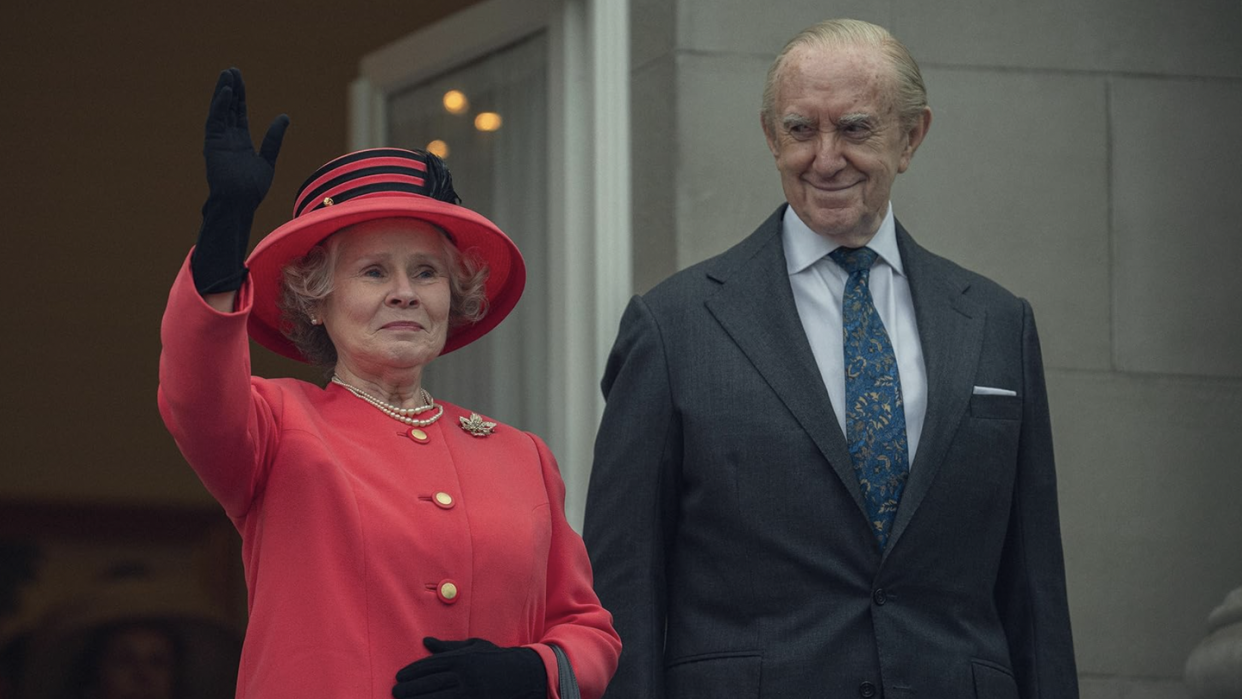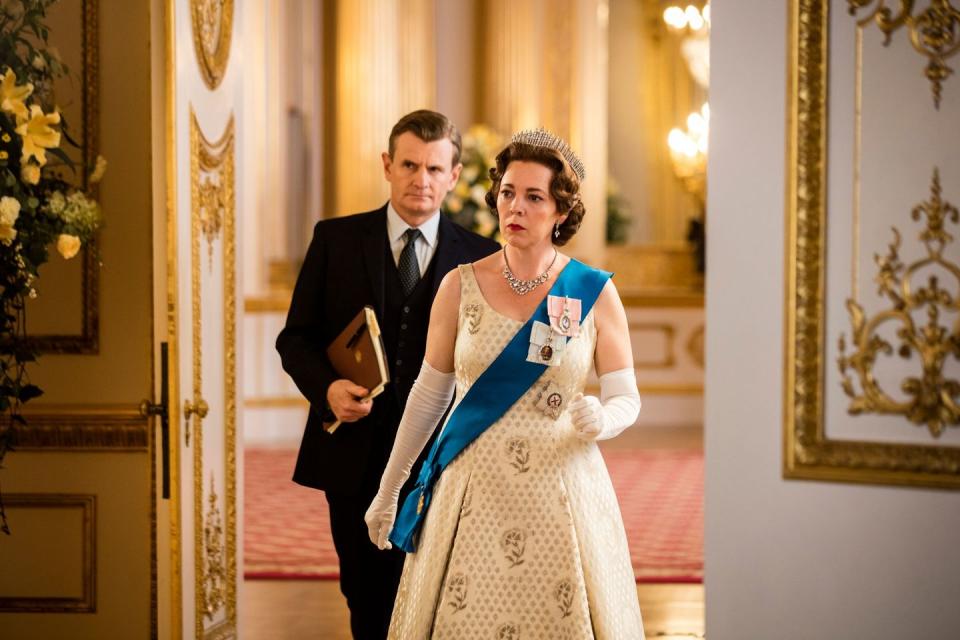'The Crown' Season Six Finale Is a Mesmerizing Mess

Peter Morgan once called The Crown, his award-winning Netflix show, a love letter to Queen Elizabeth III. I suppose that’s true. Over the past six seasons, The Crown has chronicled her life—along with those around her in painstaking detail—beginning with her ascension to the throne at just 25 years old. Still reeling from her father’s death, the monarch was flung into a position of power and immeasurable responsibility.
You don’t have to watch The Crown to understand that weight, because you’ve seen it play out in real time. The pains and joys of royalty are evident in every tabloid, televised wedding and funeral, podcast, documentary, and book made in their likeness. Anything that’s been produced about the monarchy hammers in a sobering reality: royalty is a blessing and a curse.
Season Six of The Crown is divided into two parts, covering nearly a decade in time. Part One premiered on November 16, and largely focused on Princess Diana’s final days. Set during the summer of 1997, we see Diana (Elizabeth Debicki) part ways with Prince Charles (emotionally, at least) and begin her relationship with Dodi Fayed (Khalid Abdalla)—which ends in a tragic car accident. The aftermath sparks an uproar amongst the public who believe the monarchy either played a hand in her demise—or worse, is unfazed by her death.
The criticism is loud and clear in Part Two of Season Six—out now—when the monarchs receive a shockingly low approval rating. The public believes they’re a cold, calculating, wasteful, and ultimately antiquated institution. It’s not entirely true. Despite their pitfalls, the royals have a deep, unwavering love for one another. In hopes of improving their perception, Queen Elizabeth consults the new Prime Minister Tony Blair (Bertie Carvel), who suggests they change things up. The Queen rejects the notion and later insists that their way of life is necessary. “This is our duty,” she says, “To lift people up and transport them to another realm—not bring them down to Earth and remind them of what they already have.”
It begs a few questions. First, do people want to be transported to another realm? Also, do the royals even enjoy living in their own realm? When the Queen dismisses Blair, she decides that the latter doesn’t matter. Life as a national figurehead—at that point for 53 years—caused countless riffs between her family, robbed her of her youth, and made her a punching bag for criticism—yet she holds the position with pride. It’s a complex decision for her to make and even more confusing to watch. On the one hand, you want to yell, “Stop being so stubborn!” Then again, what else is she to do? How do you break a cycle when it’s the only life you know?
That’s seemingly the question Morgan wants us to consider, even after the credits roll. The Crown ends, in 2005 with the Queen deciding to continue her reign, after she briefly considers stepping down from her position. Since then, the royal family has been deeply entrenched in scandal, including everything from alleged racism to sexual abuse. Prince William married Kate Middleton, and his wedding was viewed by millions around the world. Later, Prince Harry married Meghan Markle, a biracial American, and both of them suffered abuse from the tabloids. Eventually, they abandoned their royal duties—perhaps a result of veering away from the “realm” Queen Elizabeth speaks about in the show—and experienced even more criticism for it. Numerous grandchildren entered the world and were promptly compared to their notorious family. The Queen died. Now, Charles and his wife, Camilla, run the throne.

All the while, the world studied their every move as if they were watching a reality show. The Crown’s mix of fact and fiction only fuels the fire, giving us all more material to obsess over. I’ll be the first to admit: it’s hard to look away.
It’s impossible to ignore the glamour that comes with being a Windsor. You can't ignore the countless missteps and pain caused by the royal family. It’s even harder to dismiss the Queen's historic reign as an unflinchingly confident woman in a world dominated by men. In the final episode, titled “Sleep, Dearie Sleep,” Queen Elizabeth has a conversation with her younger self, reciting the oath she took years before. “I declare before you all that my whole life, whether it be long or short, shall be devoted to your service,” she says.
Truthfully, I don’t think she—or the rest of the royals—stood a chance. Humans aren’t infallible. It’s against our nature. And any institution that expects it will fail.
Though Morgan calls The Crown a love letter, it’s better described as a cautionary tale. The final episodes leave each character at the cusp of a transformation. Camilla is finally able to marry Charles, but the Queen’s dismissal of their love—which dates back to before Diana was thrust into the mix—is matched with appreciation of their “patience.” Meanwhile, William has become an international star like his mother, though all he wants is a life of privacy. And Harry? Well, everyone seems to be worried about how life as “number two” will affect his psyche.
The finale ends with Queen Elizabeth leaving a cathedral, while younger versions of the monarch gaze at her with pride. It’s exciting for a moment. But once you realize her final years will be just as frenzied as the events of the last six seasons, it's depressing.
You Might Also Like


